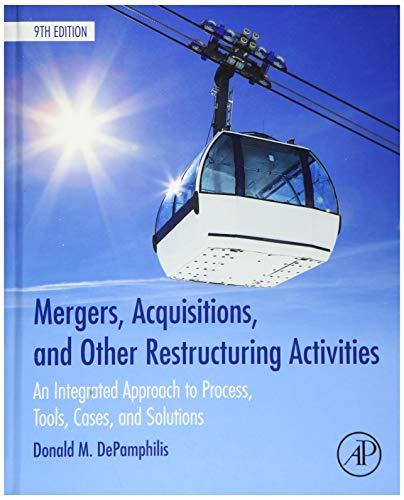


The Russ Fogler Company, a small manufacturer of cordless telephones, began operations on January 1. Its credit sales for the first 6 months of operations were as follows: Month January February March April May June Credit Sales $ 53,000 103,000 123,000 108,000 143,000 163,000 Throughout this entire period, the firm's credit customers maintained a constant payments pattern: 15% paid in the month of sale, 45% paid in the first month following the sale, and 40% paid in the second month following the sale. a. What was Fogler's receivables balance at the end of March and at the end of June? Do not round Intermediate calculations. Round your answers to the nearest dollar March receivables: $ June receivables: $ b. Assume 90 days per calendar quarter. What were the average daily sales (ADS) and days sales outstanding (DSO) for the first quarter and for the second quarter? Do not round Intermediate calculations. Round ADS answers to the nearest dollar and DSO answers to one decimal place. 1st Quarter ADS: $ 1 st Quarter DSO: days 2nd Quarter ADS: $ 2nd Quarter ADS: $ 2nd Quarter DSO: days What were the cumulative ADS and Dso for the first half-year? Do not round Intermediate calculations. Round ADS answer to the nearest dollar and DSO answer to one decimal place. Cumulative Quarter ADS: $ Cumulative Quarter DSO: days C. Construct an aging schedule as of June 30. Use account ages of 0-30, 31-60, and 61-90 days. Do not round intermediate calculations. Round your answers for monetary values to the nearest dollar and for percentage values to the nearest whole number. If no entry is required, enter "O". Dollar Value Percent of Total Age of Accounts (days) 0 - 30 31 - 60 61 - 90 $ % $ % d. Construct the uncollected balances schedule for the second quarter as of June 30. Do not round Intermediate calculations. Round your answers for monetary values to the nearest dollar and for percentage values to the nearest whole number. If no entry is required, enter "o". Sales Receivables Quarter 2 April Receivables/Sales % $ $ May June c. Construct an aging schedule as of June 30. Use account ages of 0-30, 31-60, and 61-90 days. Do not round intermediate calculations. Round your answers for monetary values to the nearest dollar and for percentage values to the nearest whole number. If no entry is required, enter "O". Age of Accounts (days) Dollar Value Percent of Total 0 - 30 $ % 31 - 60 61 - 90 $ % d. Construct the uncollected balances schedule for the second quarter as of June 30. Do not round intermediate calculations. Round your answers for monetary values to the nearest dollar and for percentage values to the nearest whole number. If no entry is required, enter "O". Sales Receivables Receivables/Sales $ $ % Quarter 2 April May June % The Russ Fogler Company, a small manufacturer of cordless telephones, began operations on January 1. Its credit sales for the first 6 months of operations were as follows: Month January February March April May June Credit Sales $ 53,000 103,000 123,000 108,000 143,000 163,000 Throughout this entire period, the firm's credit customers maintained a constant payments pattern: 15% paid in the month of sale, 45% paid in the first month following the sale, and 40% paid in the second month following the sale. a. What was Fogler's receivables balance at the end of March and at the end of June? Do not round Intermediate calculations. Round your answers to the nearest dollar March receivables: $ June receivables: $ b. Assume 90 days per calendar quarter. What were the average daily sales (ADS) and days sales outstanding (DSO) for the first quarter and for the second quarter? Do not round Intermediate calculations. Round ADS answers to the nearest dollar and DSO answers to one decimal place. 1st Quarter ADS: $ 1 st Quarter DSO: days 2nd Quarter ADS: $ 2nd Quarter ADS: $ 2nd Quarter DSO: days What were the cumulative ADS and Dso for the first half-year? Do not round Intermediate calculations. Round ADS answer to the nearest dollar and DSO answer to one decimal place. Cumulative Quarter ADS: $ Cumulative Quarter DSO: days C. Construct an aging schedule as of June 30. Use account ages of 0-30, 31-60, and 61-90 days. Do not round intermediate calculations. Round your answers for monetary values to the nearest dollar and for percentage values to the nearest whole number. If no entry is required, enter "O". Dollar Value Percent of Total Age of Accounts (days) 0 - 30 31 - 60 61 - 90 $ % $ % d. Construct the uncollected balances schedule for the second quarter as of June 30. Do not round Intermediate calculations. Round your answers for monetary values to the nearest dollar and for percentage values to the nearest whole number. If no entry is required, enter "o". Sales Receivables Quarter 2 April Receivables/Sales % $ $ May June c. Construct an aging schedule as of June 30. Use account ages of 0-30, 31-60, and 61-90 days. Do not round intermediate calculations. Round your answers for monetary values to the nearest dollar and for percentage values to the nearest whole number. If no entry is required, enter "O". Age of Accounts (days) Dollar Value Percent of Total 0 - 30 $ % 31 - 60 61 - 90 $ % d. Construct the uncollected balances schedule for the second quarter as of June 30. Do not round intermediate calculations. Round your answers for monetary values to the nearest dollar and for percentage values to the nearest whole number. If no entry is required, enter "O". Sales Receivables Receivables/Sales $ $ % Quarter 2 April May June %









